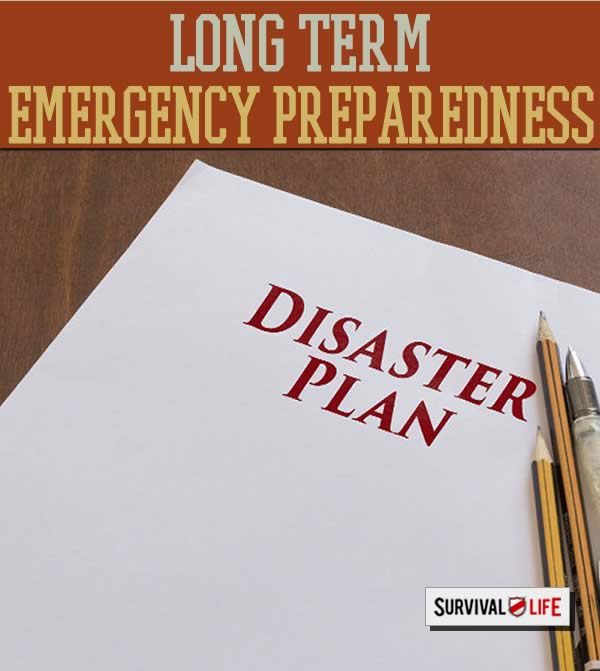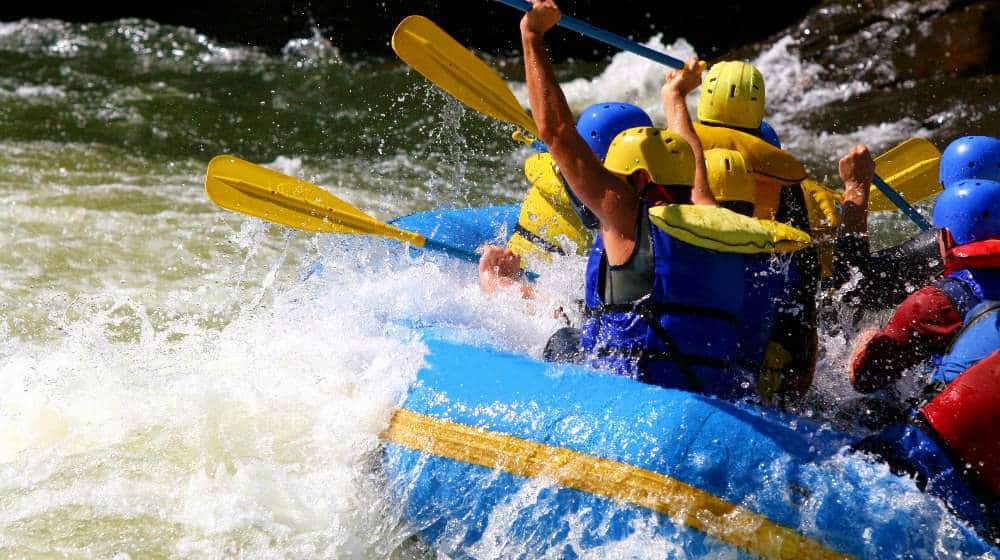Family
Emergency Preparedness | Is 72 Hours Enough?

For the average citizen, an emergency preparedness kit is a ready-to-use, portable package containing supplies, food and water rations, as well as other vital supplies and equipment for maintaining personal well-being—or, at least, staying alive when forced into extremely dangerous or uncontrollable circumstances.
The most important considerations for planning and developing your personal or family Emergency Preparedness Action Kit (E/PAK) is found in this Emergency Preparedness Rules of Three:
1. Your level of emergency preparedness should exceed the anticipated level of risk!
That being the case, it’s time to re-examine the old emergency preparedness advice of having a 3-day kit, Bug-Out Bag (B.O.B.), Get Out Of Dodge bag (G.O.O.D.), Grab and Go Kit, or emergency preparedness kit—whatever you choose to call it!
Past experiences in times of disaster have proven the 3-day kit totally inadequate for the sustenance of life, health, safely, and security for the time required.
Historically, FEMA determined (more or less politically) that the 3-days’ sustainment was the degree to which the public would accept, and announced it as policy so many years ago it’s impossible to find the original dictum.
Whether wise or foolish, FEMA’s still sets the standard for the preparedness industry. This message rings so loudly—though incorrectly––that all other current and conventional wisdom becomes lost in the “official” voice of politically correct traditional advice.
Most experts agree that the number of citizens invested in emergency preparedness readiness for a 72-hour period is grossly overstated by government units—whether national, state, regional, or local.
2. You are the first responder for your family and responsible for them!
Perhaps in the past the 3-day kit was reasonable, but the experiences of those dealing with the magnitude and duration of many recent natural disasters has forced us to reconsider the advisability of a longer timeframe for adequate response from government, military, and private agencies.
In fact, worldwide, disasters now force us to regard the adoption of new parameters for response as lasting much longer than the 72-hour standard of yesteryear.
In the face of today’s reality of increased populations, larger towns, cities, increased areas of coverage, reduced budgets and manpower, and the rise in incidents of greater storm damages, the 3 days’ emergency rations and supplies are just not enough to give you and your family the extended protection that will most likely be needed.
This is the responsibility of parents and guardians! That is why the head of the household must take responsibility for the family and act now to prevent future problems. You must consider that you are on your own.
3. Get A Grip on Reality––Get Prepared or Become Better Prepared!
Think of these points of consideration as you define, collect, assemble, and organize your kit(s) for your disaster and emergency preparedness needs:
- A Grab & Go Kit—or 3-day kit, Bug-Out Bag (B.O.B.), Get Out of Dodge (G.O.O.D.) bag, or whatever you want to name it—should be added to your disaster and emergency supplies. These should include provisions for heat and light, shelter, sanitation, and cooking equipment. Items of such critical need and most likely to be lost or become ineffective in case of storms should be kept in waterproof containers.
- Every major disaster since Katrina required at least 5-7 average days before relief was available.
- Always keep your kit in a secure location at a protected place near an exit door.
- Don’t store emergency supplies near extreme heat or cold.
- Each family member should have a personal kit so all have access individually to food, clothing, and water. Where necessary, some heavy items could be removed and loads shared by family members.
- Make sure everyone can carry, push, pull, or handle their emergency kit without undue stress or injury.
- Keep a comfortable pair of heavy-duty walking/hiking shoes with your kit.
- Your extra keys and a reliable emergency light source should be kept in an outside pocket or attached to the kit for easy access.
- Be familiar with your emergency kits before the need arises. Practice often to assure everyone has familiarity with the kit and how to utilize all the components. Camping—even in the backyard—will assure that everyone can recognize, access, and utilize their kit.
- Rotate all foods and water in your kits on a regular basis. We have a picnic from our E-PAK when the lights go out, the cable goes down, or the Internet is lost to remind us there is another Emergency Preparedness Rules of Three:
- Practice!
- Practice!
- Practice!
- Practice will highlight the items you and your family will need as experience is gained and knowledge increases.
- Check clothing items to make sure they still fit properly and are appropriate for the season.
- Always store batteries in waterproof locations so they are dry and cool, or they could leak and ruin your equipment.
- Plan to have from 7 to 21 days’ emergency preparedness supplies in your disaster/emergency kit(s).
Basic Disaster Supply Checklist
Need some more help on figuring out what exactly should be included in your disaster supplies kit?
Here’s what we suggest you have on hand in case of any disaster:
• 5-7 day supply of non-perishable food.
• 5-7 day supply of water – enough for one gallon of water per person, per day.
• Portable, battery-powered radio or television
• Flashlight
• Extra batteries for radio, television and flashlight.
• First aid kit and manual.
• Sanitation and hygiene items (moist towelettes and toilet paper).
• Matches and waterproof container.
• Whistle.
• Extra clothing.
• Kitchen accessories and cooking utensils, including a can opener.
• Photocopies of credit and identification cards, kept in a waterproof file.
• Cash and coins.
• Specific special needs items, such as prescription medications, eye glasses, contact lens solutions, and hearing aid batteries.
• If you have infants, items such as formula, diapers, bottles, and pacifiers
©2014 James Talmage Stevens. Content from Making the Best of Basics, ed. 12.5
This article is adapted from Doctor Prepper’s Making the Best of Basics.
Get your copy here.
Want to know more? Check out these related articles:
- Emergency Preparedness: What Are The Odds?
- Emergency Hurricane Survival Kit List & Preparedness Tips
- Emergency Preparedness With The S.U.R.V.I.V.A.L. Acronym
Follow us on Facebook, Instagram, Twitter, Tumblr, and Pinterest!
***Disclaimer: The contents of this article are for informational purposes only. Please read our full disclaimer.***
Editor’s Note: This post was originally published on February 20, 2020, and has been updated for quality and relevancy.
-

 Do It Yourself7 months ago
Do It Yourself7 months agoParacord Projects | 36 Cool Paracord Ideas For Your Paracord Survival Projects
-

 Do It Yourself9 months ago
Do It Yourself9 months agoHow To Make Paracord Survival Bracelets | DIY Survival Prepping
-

 Do It Yourself9 months ago
Do It Yourself9 months ago21 Home Remedies For Toothache Pain Relief
-

 Do It Yourself10 months ago
Do It Yourself10 months agoSurvival DIY: How To Melt Aluminum Cans For Casting
-

 Exports8 months ago
Exports8 months agoAre Switchblades Legal? Knife Laws By State









Pingback: Emergency Preparedness | IS 72 Hours Enough? | Survivalist Basics | Be Prepared For Anything!
Pingback: Emergency Preparedness | IS 72 Hours Enough? | Patriot Powered News
Michael W. Perry
November 19, 2014 at 8:26 AM
There’s an interesting idea that someone with organization skills might want to formally set up. It’d deal with a really long-term emergency, mean a global or national breakdown that’d last months or years. Groceries in a garage won’t last that long. You need reliable access to newly grown food.
The idea would pair those not-like-me people who love being independent farmers and supplying local markets with those who don’t have the time or inclination to become farmers. In good times like now, the relationship would be ordinary. A monthly membership fee paid to the farmer would get in-season crops like regular farmer’s market customers.
In a crunch, the relation would get much more intense. The farmer would be committed not to get rich on the black market but to service those who help support his farming in good times. in exchange, those in towns would get the food they desperately need and provide him with help in planting and harvesting, since a disaster that deep and prolonged would mean tractors and harvesters might not be working.
I got the idea from a book I read that’d been written by someone who’d been a teen girl in Denmark in the last two years of WWII, when Germany was taking so much food from the country, the people were starving. She describes her struggle to get even a little food for her family. The situation at the end was so desperate that, as soon as the war ended, Sweden air-dropped food into Denmark. People would have died in the delay trains and boats would have entailed.
Near the end of the war, the girl meets relatives who lived on a farm and they’re surprised. You’re family that said. If we’d know your plight, we could have given you some of our food.
This plan would establish relationships that’d be like those family ties.
obsidian
November 19, 2014 at 11:47 AM
Networking, I agree.
At some point stocked up supplies will run out or become too old.
Some jurisdictions limit the amount of land that can be used for crops, access to storing water and such.
The old plantation style system of share croppers and hands would come back in style.
obsidian
November 19, 2014 at 11:43 AM
Our camping gear saves us during most periods of local power failure due to storms, summer and winter.
Ice storms sometimes leave us stranded in a rural area without vehicle travel for up to a week. The distance to a store is walkable yet if the store cannot open what’s the point?
Some summer storms take the power down for 72 hours hardly more than 96 hours during extreme tornado action.
We have water storage, a well, camping stoves and lanterns of propane and kerosene a stock of basic canned food.
After a week of inactivity and power loss things get dicey.
Realistic war or civil disturbance preparedness should be for at minimum 30 days without stores, water services and food as well as power. If after 30 days of loss of civilization things are not back on track or near it then you will find even the longer 90 day prep may not be enough.
If a situation where every thing goes tits up for a year or two a major lifestyle change is called for, such as leaving for better climate and safer areas, taking up farming primitive style and or livestock keeping. If things go to that bad for a year you may find you are in deeper shit than a shovel can dig out of.
I’d say to be safe for the average emergency 96 hours is minimum.
For worse perhaps the trials and tribulations of the citizens of Stalingrad or world war two Europe could be studied.
Normal emergency, such as power outage due to storms is 72 hours, for the best of prep vs the ability to finance 96 hours is best.
Pingback: Emergency Preparedness | Is 72 Hours Enough? | US Crisis Preppers
Pingback: Holiday Accidents: What to Do During an Emergency | Survival Life
Pingback: Medicinal Plants You Can Grow In Your Backyard | Survival Life
Pingback: Survival Life's 10-Step Guide To Emergency Preparedness
Pingback: Survival Guide 101: Why Survival Is A Necessity | Survival Life
Pingback: Medicinal Plants You Can Grow In Your Backyard | Survival Life - Survive!
Pingback: Your Road Map To Self Sufficiency | Survival Life
Pingback: Medicinal Plants You Need To Make Natural Home Remedies – Ultimate Survival Alerts
Pingback: Medicinal Plants You Need To Make Natural Home Remedies
Pingback: Preparedness | These Items Make Your Travel More Secure | Survival Life
Pingback: Preparedness Tips: Prepping For Travel - Survival Patch
Pingback: Preparedness Tips: Prepping For Travel
Pingback: Your Road Map To Self Sufficiency – Ultimate Survival Alerts
Pingback: Your Road Map To Self Sufficiency
Pingback: Medicinal Plants You Need To Make Natural Home Remedies - TRENDING STORY
Pingback: Medicinal Plants You Need To Make Natural Home Remedies – Help For All
Pingback: Medicinal Plants You Need To Make Natural Home Remedies – Survival NEWS
Pingback: Medicinal Plants You Need To Make Natural Home Remedies – iSmartNetwork Magazine
Pingback: Kevin Estela and Bill Rapier Discuss Lessons Learned in Preparedness Before and After the Military [PODCAST] | Best Go Bag
Pingback: The Preparedness Mindset & Networking [PODCAST] - Cooking in Quarantine
Pingback: The Preparedness Mindset & Networking [PODCAST] – Alive After USA Fall
Pingback: The Preparedness Mindset & Networking [PODCAST] | Best Go Bag